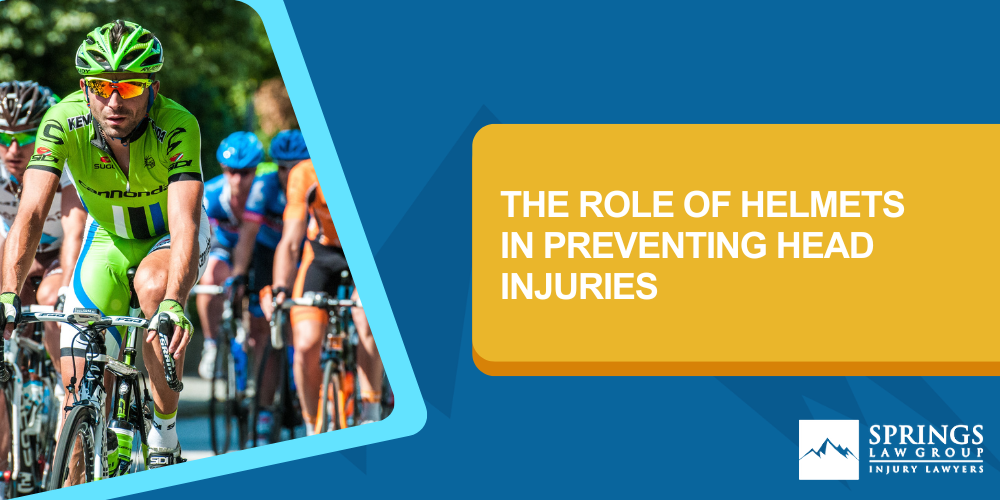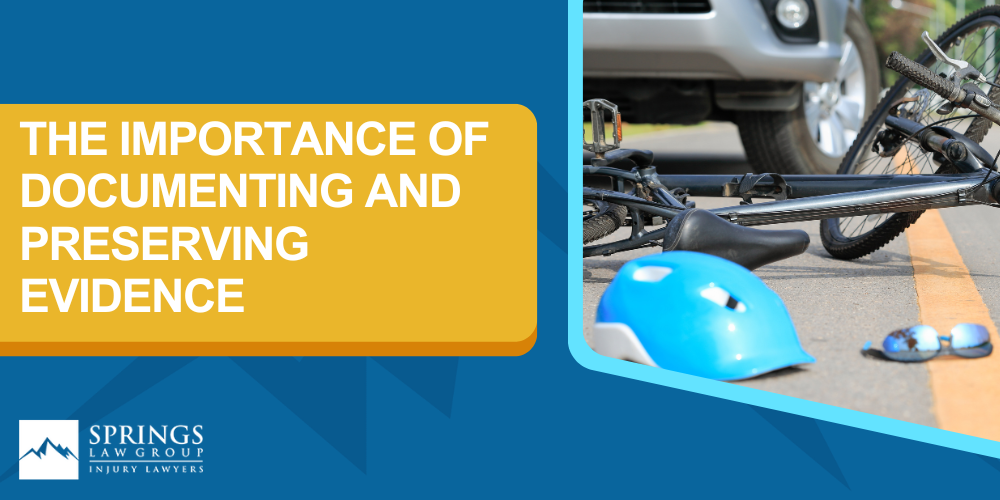The Importance of Wearing a Helmet While Cycling

Cycling is an enjoyable and eco-friendly mode of transportation that has gained popularity in recent years. However, it’s important to remember that cycling can also be dangerous, and accidents can result in serious injuries.
One of the most effective ways to protect yourself while cycling is by wearing a helmet.
At Springs Law Group, we understand the importance of promoting cycling safety, especially in our local community. Our Colorado Springs bicycle accident lawyers have seen firsthand the devastating consequences of bike crashes.
In this article, we’ll discuss the benefits of wearing a helmet while cycling and other important safety considerations for cyclists. Our goal is to bring awareness to this issue and encourage our readers to prioritize their safety while cycling.
If you or a loved one has been injured in a bicycle accident, don’t hesitate to contact Springs Law Group for a free consultation.
The Legal Implications of Bicycle-Related Injuries
Bicycling is a common mode of transportation and exercise, but unfortunately, it can also be a source of injury.
According to the Centers for Disease Control and Prevention, “Nearly 1,000 bicyclists die and over 130,000 are injured in crashes that occur on roads in the United States every year.” Bicycle accident injuries can range from minor scrapes and bruises to severe head injuries and even fatalities.

When a bicycle accident results in injury, it’s important to understand the legal implications. Colorado Springs bicycle accident lawyers are equipped to help those who have been injured in bicycle accidents. They can provide guidance on navigating the legal process, including working with insurance companies and determining liability.
If you have been injured in a bicycle accident, Springs Law Group can help you understand your rights and options. They can help you determine who is responsible for the accident and work to secure compensation for your injuries, medical expenses, lost wages, and other damages.
The Role of Helmets in Preventing Head Injuries
Wearing a helmet is crucial in preventing head injuries in cycling accidents. A helmet can absorb the force of an impact and reduce the risk of skull fractures, brain damage, and other serious injuries.

Properly fitting helmets can also prevent lacerations, abrasions, and less severe head and face injuries. However, helmets cannot guarantee complete protection against all types of head injuries. Cyclists should also take other safety and preventative measures for bicycle accidents, such as following traffic laws and wearing high-visibility clothing.
Negligence and Liability in Bicycle Accidents
In the event of a bicycle accident, determining negligence and liability can be a complex process.
Negligence is the legal term used to describe a failure to exercise reasonable care, which can result in harm to others. In the context of a bicycle accident, negligence can refer to a driver’s failure to follow traffic laws or yield to a cyclist, a cyclist’s failure to signal or obey traffic laws, or any other actions that could have contributed to the accident.

Liability is the legal responsibility for an accident or injury. In bicycle accidents, liability can depend on the specific circumstances of the accident, including who was at fault and whether any laws were violated. Liability can also depend on factors such as road conditions, weather, and equipment failure.
Personal injury lawyers can help determine negligence and liability in bicycle accidents. They can conduct investigations, gather evidence, and work with accident reconstruction specialists to build a case. If negligence can be proven, the at-fault party may be held liable for damages, including medical expenses, lost wages, and pain and suffering.
The Importance of Documenting and Preserving Evidence
Documenting and preserving evidence is crucial in the aftermath of a bicycle accident. It can be used to determine liability and support a legal case if necessary. Without evidence, it can be difficult to prove who was at fault in an accident or to demonstrate the extent of the bicycle accident injuries sustained.

Taking photos of the accident scene, exchanging contact and insurance information, seeking medical attention, keeping a journal, and preserving any physical evidence are all important steps in documenting and preserving evidence. These actions can help establish the facts of the accident and the injuries sustained, which can be crucial in proving negligence and determining liability.
Contact Springs Law Group Today
Wearing a helmet is essential for preventing head injuries in cycling accidents, and documenting and preserving evidence can be crucial in determining liability and supporting a legal case if necessary. At Springs Law Group, we’re committed to promoting cycling safety and protecting the legal rights of cyclists who have been injured in accidents.

If you or a loved one has been injured in a cycling accident, please contact us for a free consultation. Our experienced personal injury attorneys are here to help you understand your rights and options and to fight for the compensation you deserve.
